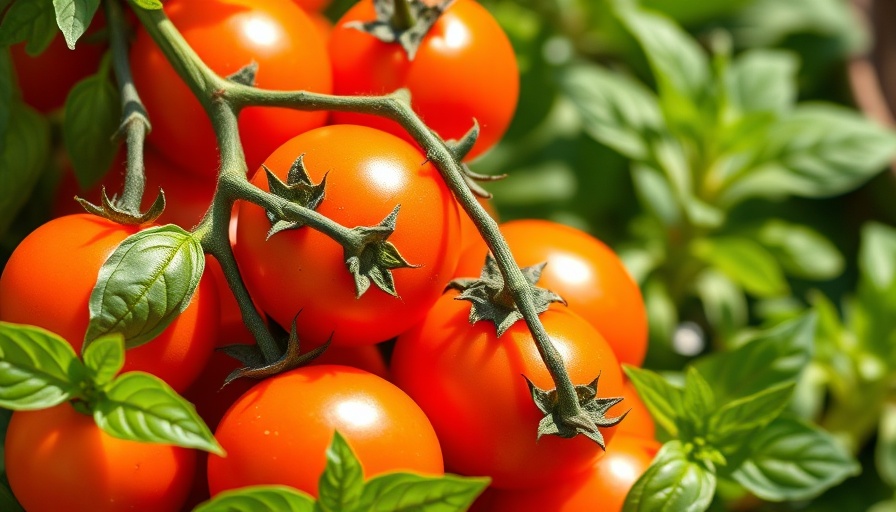
Maximize Tomato Growth with Companion Planting - What Plants Work Best?
Are you ready to make your vegetable garden thrive? Companion planting offers a unique strategy for growing tomatoes alongside beneficial plants that not only enhance their productivity but also keep pests at bay. Let’s dive into the fascinating world of companion planting and discover which plants make the perfect pals for your tomatoes!
Understanding the Benefits of Companion Planting
Companion planting involves strategically placing different plant species together to foster a mutually beneficial relationship. For tomatoes, choosing the right companions can lead to improved soil health, reduced pest pressure, and even increased pollination rates. Experienced gardeners have long recognized that harmonious plant pairings ultimately yield healthier crops.
Top 21 Companion Plants for Your Tomato Garden
When considering companion plants for tomatoes, a blend of herbs, flowers, and vegetables can enhance your garden’s overall health. Here are 21 amazing companions that can help cultivate the juiciest tomatoes:
- Basil: Known for its culinary uses, basil also repels pests like aphids and hornworms. Plus, studies have shown it can even increase tomato yields!
- Beans: These nitrogen-fixing plants help enrich the soil, benefiting tomatoes in their nutrient uptake.
- Borage: With its ability to attract pollinators and repel pests, borage is a dynamic addition to any tomato patch.
- Marigolds: These vibrant flowers are not just pretty; they deter nematodes and attract beneficial insects.
- Garlic: Its powerful scent is a natural pest deterrent, and it helps improve soil health too.
- Oregano: This fragrant herb attracts pollinators and its flowers encourage the presence of helpful insects.
- Cilantro: When allowed to flower, cilantro attracts pests’ natural predators, enhancing your tomato’s ability to stay healthy.
- Onions: The allium family can help deter various pests from your tomato plants.
- Zinnias: These ornamental flowers are loved by pollinators, supporting better pollination for your tomatoes.
- Sweet Alyssum: Known for attracting beneficial wasps and reducing pest populations, this plant is a multifunctional ally.
- Bee Balm: Great for attracting pollinators and beneficial insects, enhancing your tomato growth indirectly.
- Thyme: Its low growth allows it to serve as a living mulch, and its flowers invite pollinators.
- Peas: These help with nitrogen replenishment and can also provide a fresh crop alongside your tomatoes.
- Calendula: Not only beautiful, but this flower also repels harmful pests and attracts beneficial ones.
- Hairy Vetch: This cover crop enriches the soil with nitrogen and can be beneficial when turned under.
- Kale: A leafy green that grows well with tomatoes and adds to your harvest.
- Okra: This flowering plant can offer shade and help prevent weeds, creating an enriched planting environment.
- Carrots: They aerate the soil while taking up little space, making them excellent neighbors for tomatoes.
- Corn: While caution is advised in its selection, corn can thrive with tomatoes under the right conditions.
- Parley: A versatile herb, it does well in various conditions and supports pollinator activity.
Plants to Avoid Near Your Tomatoes
While many plants positively impact tomato growth, others should be avoided due to their negative interactions. Here are three companions to steer clear of:
- Cabbage: This brassica family member is known to compete with tomatoes for nutrients and space.
- Potatoes: Both crops can be susceptible to the same diseases, ultimately jeopardizing your yield.
- Fennel: This herb can inhibit tomato growth and should be planted away from your tomatoes to avoid adverse effects.
Take Action: Create Your Companion Garden
By incorporating these companion plants into your tomato garden, you can maximize your yield and grow a vibrant and productive vegetable patch. Whether you choose to fill your garden with herbs, flowers, or vegetables, each companion plant can bring unique benefits. Get started on planning your companion garden today!
Common Misconceptions About Companion Planting
Many believe that companion planting is primarily about aesthetics. However, this gardening technique is deeply rooted in ecological principles that demonstrate how plant relationships can enhance growth and health. Understanding these relationships enables gardeners to create thriving ecosystems that benefit all plants involved.
Conclusion
Companion planting is a valuable practice that not only enhances the health and productivity of your tomatoes but also fosters a vibrant garden ecosystem. Use the insights shared in this article to craft a companion planting strategy that enables your vegetable garden to flourish!
12 Views
0 Comments
 Add Row
Add Row  Add
Add 




Write A Comment